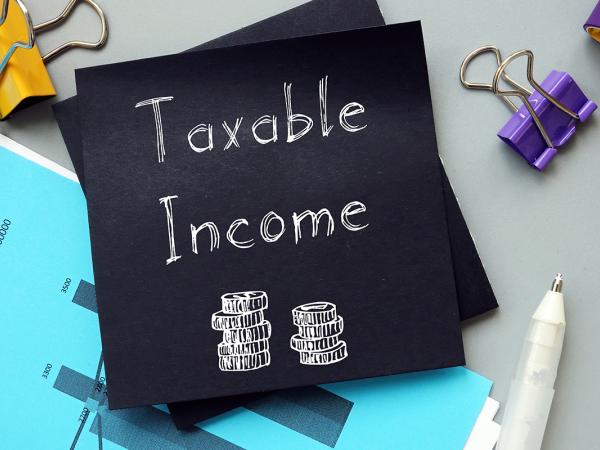Working out your tax
You need to be able to work out your tax so that you can check you are paying the correct amount. We explain how in four steps.

Content on this page:
Steps to work out your tax
The tax year runs from 6 April one year to 5 April the next, for example, the tax year 2024/25 runs from 6 April 2024 to 5 April 2025.
You can work out your tax by following these four stages:
1. Work out whether your income is taxable or not
Some income is taxable and some is tax free. You start by adding up all amounts of income on which you are charged to income tax for the tax year.
You can then take certain deductions from this figure, such as trade losses or deductible employment expenses that have not been reimbursed.
For many people in employment, their only taxable income will be their taxable employment income, including non-cash benefits-in-kind.
Pensioners might have a few different sources of income – for example, a state pension and a private or occupational pension.
You have to pay tax on any other taxable income that you have in the tax year too, such as savings income or profits from renting out a property. So, if you have any other taxable income, you need to include this in your calculations.
2. Work out the allowances you can deduct from your taxable income
There are several different tax allowances to which you might be entitled. However, at this stage of the tax calculation there are only two which are relevant: the personal allowance and the blind person’s allowance.
Every man, woman and child resident in the UK has a personal allowance. For most people, the personal allowance for the tax year starting on 6 April 2024 and finishing on 5 April 2025 is £12,570.
Despite its name, you do not have to be completely without sight to claim the blind person’s allowance. So if you have very poor eyesight, check if you are entitled.
Note, however, that some so-called ‘allowances’ are in fact nil rates of tax that are applied at step 3 below, and some are given as a tax credit or tax reduction at step 4 below. For many people, their only allowance will be the personal allowance.
3. Work out at what rate your income is taxed
If you qualify, some of your savings income might be taxed at 0% – that is, no tax will be due on it.
Next, there is the basic rate band, in which most types of income are taxed at 20%.
Most people do not pay tax higher than the basic rate.
But for some people with higher levels of income, 40% and 45% tax rates can also apply.
In addition, you are entitled to a personal savings allowance (£1,000 for basic-rate taxpayers for 2024/25) and a dividend allowance (£500 for all taxpayers for 2024/25). These are not tax allowances as such; they are 0% rate bands of tax for savings income and dividend income respectively.
If you live in Scotland and are a Scottish taxpayer, there are Scottish rates and bands of income tax set by the Scottish Parliament that apply to your non-savings and non-dividend income. The UK rates and bands apply to your savings and dividend income.
Similarly, if you live in Wales and are a Welsh taxpayer, there are Welsh rates of income tax set by the Welsh Assembly that apply to your non-savings and non-dividend income. The UK rates apply to your savings and dividend income.
4. Consider if you can take anything off or need to add anything to your tax bill
For example, if you and your spouse or civil partner claim the marriage allowance (transferable tax allowance), and your spouse or civil partner has given up part of their personal allowance, then you will be entitled to a tax reduction.
You may also be able to deduct foreign taxes paid on income that is also taxable in the UK, as part of a foreign tax credit claim. See our page Double taxation for more information.
But take care: some deductions cannot create a refund, such as the notional tax paid on gains on UK life assurance policies or investment bonds.
You then need to consider whether you are liable to any tax charges, such as tax on Gift Aid donations, the high income child benefit charge, or tax on certain state pension lump sums.
Your income tax liability for a year is the total amount of tax you owe for that year after all available deductions plus any income tax charges.
You then compare this to the amount of UK tax you have already paid (such as tax you have paid through PAYE). To know how much tax you have paid through PAYE, look at the P45 or P60 forms which should have been issued to you by your employer(s) or pension provider(s). See also our information on how you can check your coding notice and understand your payslip.
if your tax liability exceeds amounts already paid, the difference is called your balancing payment for the year. If amounts already paid exceed your tax liability, you will be due a refund.
Calculation layout
For most individuals with simple tax affairs the way the tax calculation works is as set out below.
The calculations for Scottish taxpayers and Welsh taxpayers also follow this same basic format.
|
£ |
|
| Total taxable income – most income is taxable although some may be tax free |
xxxx |
| Take off certain tax allowances |
- xxxx |
| You are left with the amount of your taxable income on which you have to pay tax |
xxxx |
| Calculate your tax liability using the tax rates that apply to you |
xxxx |
| Take off the amounts you get due to any special allowances, for example, marriage allowance |
- xxxx |
| Take off any tax already deducted from the income you receive before you get it |
- xxxx |
| Tax now due or repayable |
xxxx |
If you are a Scottish taxpayer, there is an example in our guidance on Scottish income tax.
More information
If you are self-employed, you may find our guidance on Calculating self-employed profits helpful.
HMRC have a tax estimate calculator for the current tax year, which you may be able to use if your tax affairs are simple. You can find the calculator and information about who can use it via GOV.UK.


